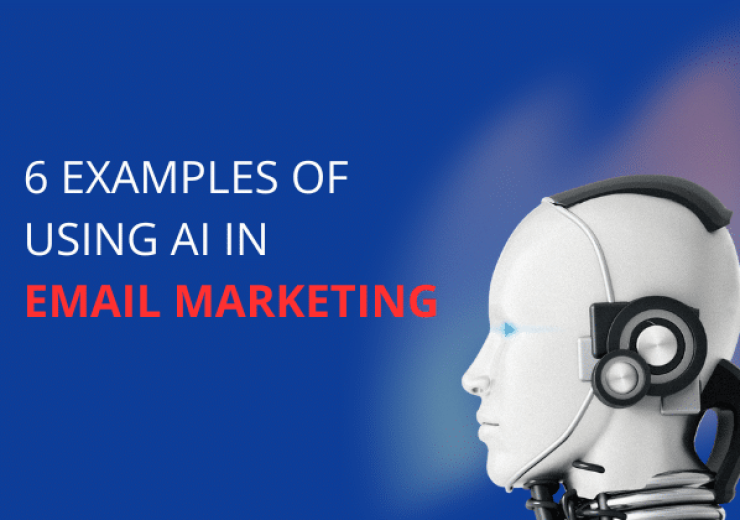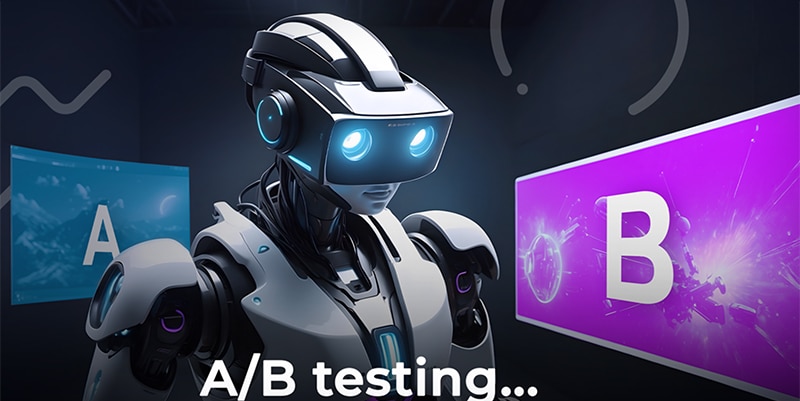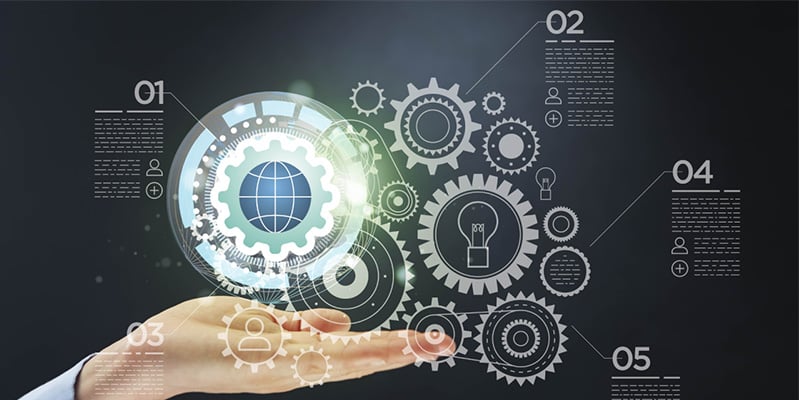6 Examples of Using AI in Email Marketing
Artificial intelligence in email marketing has transformed the way we engage with our audiences. Companies can now accurately analyse customer behaviour, automate workflows, and optimise marketing messages. New tools help marketers send relevant content without human intervention.
Key points:
- Artificial intelligence analyses customers’ past behaviour to predict what they will want next.
- Automated personalisation makes it possible to create customised emails on an industrial scale.
- Intelligent segmentation improves targeting to increase engagement.
- AI-powered email subject lines adapt to audience preferences and increase open rates.
1. Predictive analytics for smart advertising campaigns
Artificial intelligence analyzes past interactions and attempts to predict the actions customers are most likely to take. Using this information, companies refine messages, adjust sending times, and tailor offers to the interests of each recipient. Predictive analytics eliminates guesswork and increases engagement.
For example, if a customer regularly opens emails about a certain product, artificial intelligence detects this pattern and suggests sending relevant content. This data-driven approach increases the relevance of messages, and therefore, conversion rates.
Intelligent analytics also helps determine when recipients are most likely to make a purchase. AI evaluates lead quality based on past interactions, helping sales teams prioritise subsequent contacts. Customers with higher levels of engagement receive targeted discounts or exclusive offers, encouraging them to purchase.
2. Scalable automated personalization
It’s impossible to manually personalise emails for every recipient in a mailing list, but artificial intelligence can automate this process. To create a unique experience for each individual, AI-powered systems analyse:
- browsing history;
- past purchases;
- level of involvement.
For example, shoppers for outdoor gear might receive relevant product recommendations, while those who love electronic gadgets might see completely different content. This strategy makes emails more relevant without requiring human intervention.
In addition to product recommendations, AI-powered personalisation also adapts email layouts, content blocks, and images to the recipient’s preferences. An email promoting sports equipment might feature strength training equipment for one customer, while yoga accessories are featured for another. Artificial intelligence refines marketing messages in real time and increases engagement.
3. Optimize email subject lines to increase open rates
The subject line of an email determines whether it will be opened or ignored. AI analyzes data from past advertising campaigns and determines which words, phrases, and tone work best. These systems gradually refine their recommendations to increase open rates.
Marketers test several email subject lines, and AI selects the most effective one based on real-time engagement data. This approach eliminates the need for trial and error testing and helps build rapport with readers faster.
Furthermore, artificial intelligence can adapt topics to different audience segments. Younger audiences typically respond better to emojis and informal language, while industry professionals prefer a more direct approach. AI constantly refines marketing messages to maximize open rates.
4. Intelligent segmentation for targeted messages
Traditional customer segmentation for email marketing involves grouping subscribers by key parameters like age or location. Artificial intelligence goes further, studying behaviour, purchase history, and interaction patterns to create more specific segments.
For example, a fitness brand might segment customers by workout preferences. Strength training enthusiasts might receive materials about weightlifting, while yoga practitioners might receive emails about mindfulness and flexibility. This approach increases engagement by providing relevant information to each specific group.
AI-powered segmentation also helps identify inactive subscribers. If a recipient hasn’t responded to emails for several months, the system will flag them for a reactivation campaign, which will include a special discount or a feedback survey. This eliminates guesswork and truly improves your email marketing strategy.
5. Optimize Sending Time with AI
Sending time greatly impacts email effectiveness. Artificial intelligence studies recipient behaviour to determine the best time. Some people check email in the morning, while others do so in the evening. AI adjusts sending times accordingly.
Phased distribution
Sending all emails at once isn’t necessary—with AI, companies can implement a phased distribution. The message will be delivered precisely when a specific subscriber is most likely to read it. This approach increases open rates and ensures the email is sent at the right time.
Adaptation to recipient behavior
Artificial intelligence can detect changes in habits. If a subscriber starts checking email at a different time, the system will automatically adjust sending times. This way, even without human intervention, high engagement levels can be maintained.
6. Automated responses and chatbots for email marketing
Chatbots and automated AI-powered systems simplify email communication. As soon as a customer asks a question about a product or service, artificial intelligence instantly provides the necessary information. Automated systems handle routine queries, freeing up support staff to handle more complex tasks.
For example, a retail brand can use AI to provide product recommendations and answer questions about returns or order status. This speeds up communication, and the lack of delays maintains engagement.
AI responses are also integrated into email workflows. If a customer abandons their cart, the system will send a follow-up email with a reminder or a discount. If a subscriber downloads a specific piece of content, the AI will automatically trigger a series of emails with the relevant content.
AI-powered A/B testing of email campaigns
Classic A/B testing involves writing different versions of an email and determining the best one. AI significantly speeds up the process by simultaneously testing multiple variables. Email subject lines, content, call-to-action buttons, and images can all be optimized in real time.
Artificial intelligence collects data on open rates, click-through rates, and conversions, then determines the most effective options. Over time, the process becomes increasingly accurate, and email campaigns become more effective.
For example, an e-commerce company can test different product images in marketing emails. AI will track which images drive engagement best and use the data in future emails. Automation eliminates the need for marketers to spend hours manually analyzing data.
AI-Powered Email Marketing for Customer Retention
Retaining existing customers is usually much cheaper than acquiring new ones. Artificial intelligence can help a company detect when someone is starting to lose interest and initiate retention-focused email campaigns.
For example, if a subscriber hasn’t responded to emails for several weeks, AI can send a personalized message with an exclusive offer. If an existing customer hasn’t ordered anything for several months, AI can suggest products based on their purchase history.
Additionally, artificial intelligence can automatically send birthday and anniversary emails and remind customers about loyalty rewards. Personalized messages strengthen relationships and encourage repeat purchases.
Smart Email Marketing Powered by AI
Artificial intelligence in email marketing eliminates guesswork, improving the accuracy and effectiveness of advertising campaigns. Predictive analytics, automated personalization, and AI-powered segmentation help send the right messages at the right time. By utilizing modern tools wisely, brands can expect increased engagement, open rates, and retention.







































